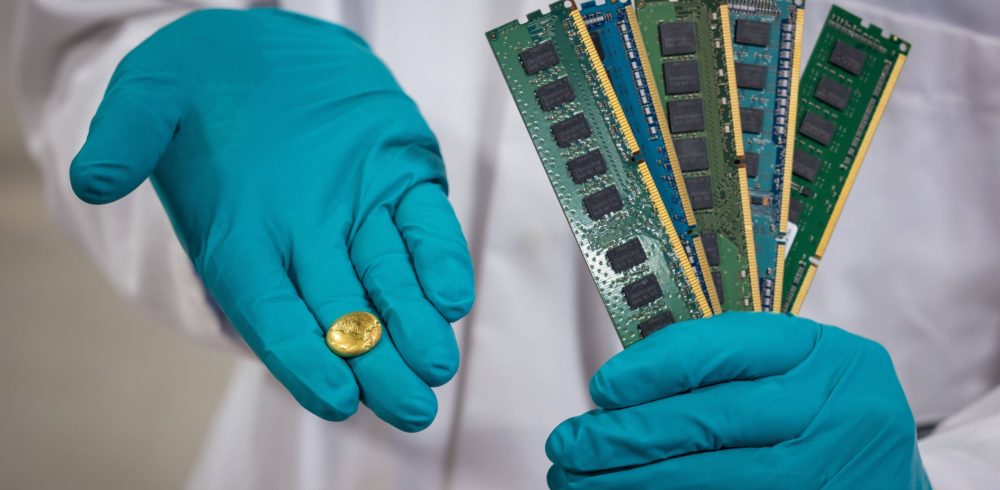A pioneering new factory that provides a more sustainable source of gold and reduces reliance on mining has been unveiled by The Royal Mint.
Located at its site in South Wales, the 3,700 square metre facility uses world-first patented chemistry from Canadian clean tech company Excir, extracting gold from printed circuit boards (PCBs) found in everyday items, such as TVs, laptops and mobile phones, in minutes. Excir’s chemistry works at room temperature, creating a more energy efficient and cost-effective method of gold recovery.
The factory has scaled the innovative technology from laboratory to an industrial level for the first time and has the capacity to process up to 4,000 tonnes of PCBs from e-waste every year. It provides the UK’s oldest company with a new, more sustainable way to “mine” high-quality 999.9 purity gold. Recovered gold is already being used in the luxury jewellery collection, 886 by The Royal Mint.
According to the United Nations’ Global E-waste Monitor[1], the generation of worldwide e-waste is rising by 2.6 million tonnes every year. A record 62 million tonnes of e-waste was produced in 2022, up 82% from 2010.
The new factory offers a more sustainable solution to this growing environmental challenge. It has been designed to ensure that valuable finite resources are recovered, and other materials are appropriately treated for onward processing.
Anne Jessopp, Chief Executive at The Royal Mint, said: “The Royal Mint is transforming for the future, and the opening of our Precious Metals Recovery factory marks a pivotal step in our journey.
“We are not only preserving finite precious metals for future generations, but we are also preserving the expert craftmanship The Royal Mint is famous for by creating new jobs and reskilling opportunities for our employees.
“We have ambitious plans, and I am proud that we are safeguarding The Royal Mint for another 1,100 years.”
As part of its commitment to being a leader in sustainable precious metals, The Royal Mint has also been actively engaging with major industry bodies to help produce the first standard by the International Organization for Standardization (ISO) for the definition of recycled gold, helping to provide clarity to the industry, end consumer and other stakeholders.
Sean Millard, Chief Growth Officer at The Royal Mint, said: “The factory underpins our commitment to using sustainable precious metals and providing a new source of high quality, recovered gold.
“It allows us to reduce our reliance on mined materials and is another example of how we’re working to decarbonise our operations.
“Our commitment to growth, innovation and circular economy principles shapes an exciting and more sustainable future for The Royal Mint, our people and our communities.”
The decline of cash use globally has been a catalyst for change at The Royal Mint, spurring innovation and diversification. Earlier this year, The Royal Mint announced the closure of its Overseas Currency division. All 230 staff have been offered roles in new and growing business areas including the Precious Metals Recovery factory, sustaining manufacturing roles for the future.
For more information on the Precious Metals Recovery factory, visit Precious Metals Recovery (royalmint.com)
For more information on 886 by The Royal Mint E-Waste Gold, visit Sustainability – 886 Royal Mint
Manufacturing & Engineering Magazine | The Home of Manufacturing Industry News
















